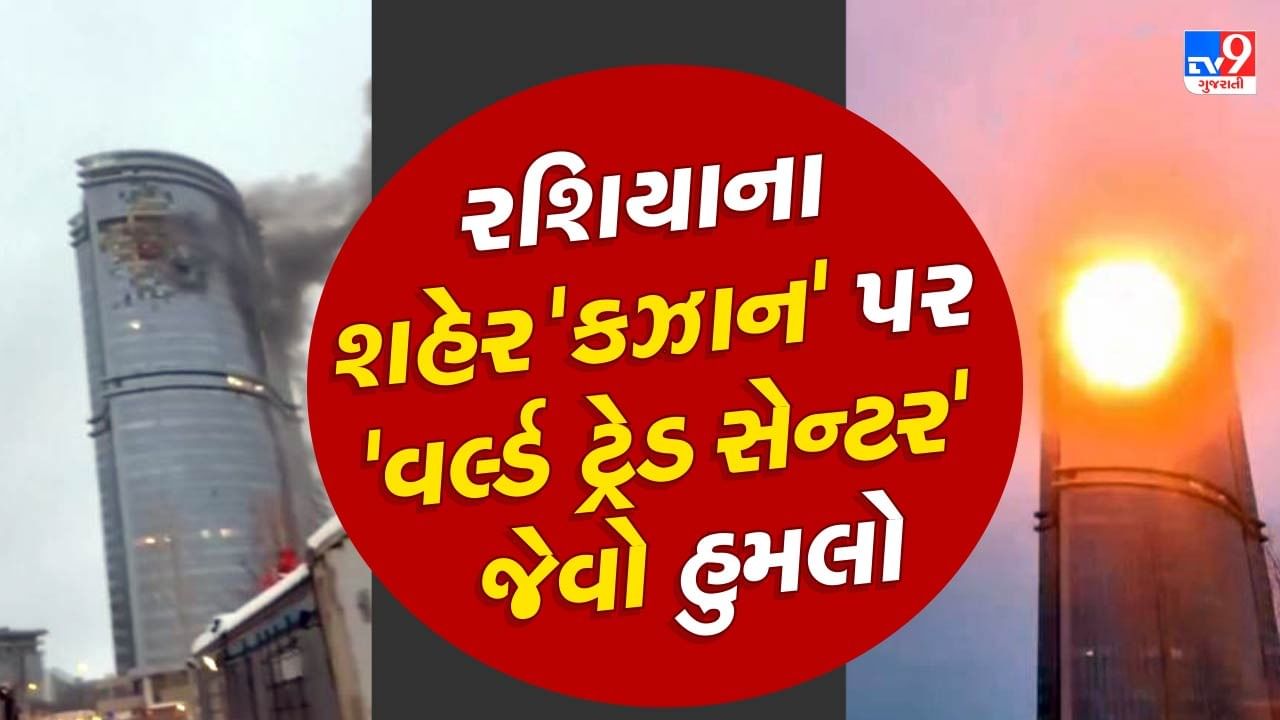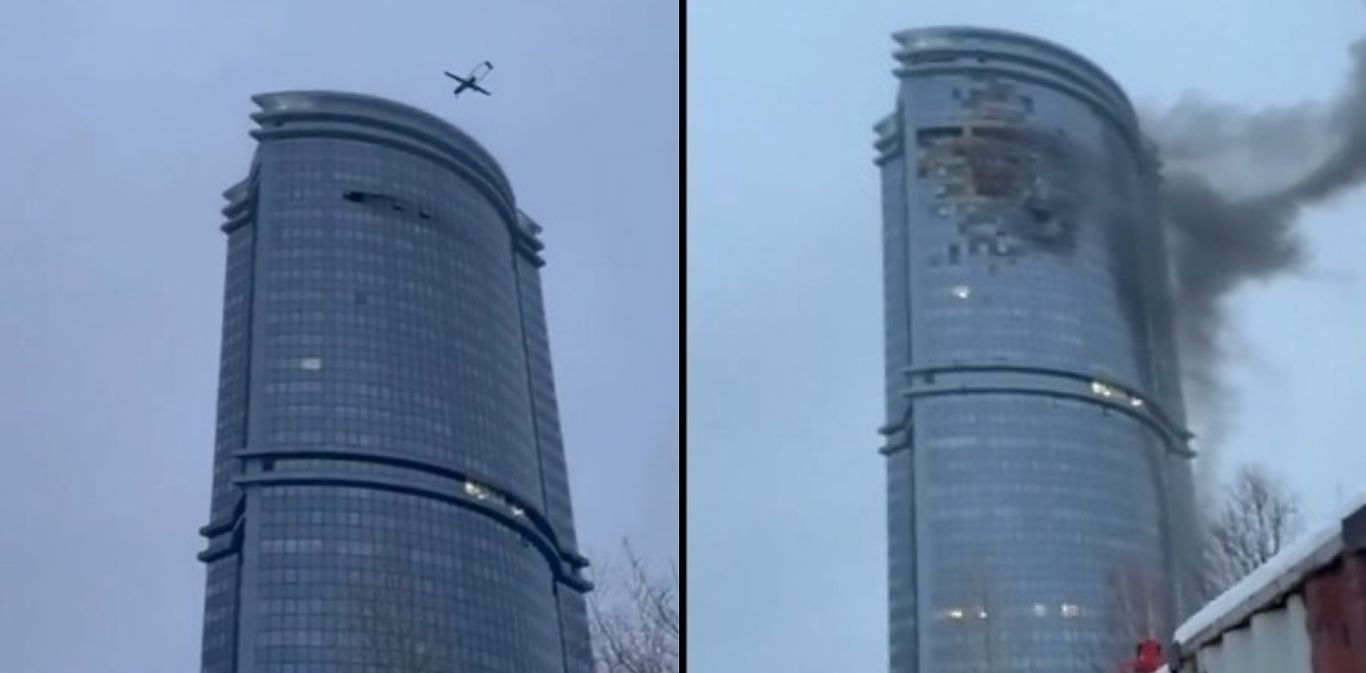Kazan drone attack immediately thrusts us into a complex narrative. The incident, shrouded in uncertainty, demands careful examination. This analysis delves into the circumstances surrounding the attack, exploring technological aspects, potential perpetrators, geopolitical implications, and the resulting security concerns. We will navigate the evolving public perception and media coverage, ultimately piecing together a clearer picture of this significant event.
The recent drone attack on Kazan highlights the escalating use of unmanned aerial vehicles in conflict zones. Understanding the technology behind such attacks is crucial, and examining the capabilities of various drone manufacturers, such as those offering advanced systems like sky elements drones , can provide valuable insights. This analysis helps us better comprehend the sophistication and potential of future drone-based attacks, and informs strategies for defense against them.
From the initial reports of explosions and damage to the ongoing investigations into the drones’ origin and purpose, the Kazan drone attack raises critical questions about national security, technological advancements, and the evolving landscape of modern warfare. The analysis presented here strives to provide a comprehensive overview, drawing upon available information and expert analysis to shed light on this unsettling incident.
The Kazan Drone Attack: An Analysis

Reports of a drone attack on Kazan, Russia, have raised significant concerns regarding national security, technological advancements in drone warfare, and the broader geopolitical implications. This analysis delves into the event, examining its technological aspects, attribution challenges, geopolitical context, security responses, public perception, and a potential attack scenario.
Kazan Drone Attack Overview

The reported drone attack on Kazan occurred on [Insert Date of Attack], resulting in [Insert reported damage and casualties]. Initial reports suggested [Insert initial reports details], with subsequent updates clarifying [Insert subsequent updates and clarifications]. The incident unfolded rapidly, with [brief chronological timeline of events, including initial reports, emergency responses, and damage assessments]. The lack of official confirmation and conflicting reports from various sources initially hampered a comprehensive understanding of the event’s scale and impact.
Technological Aspects of the Attack, Kazan drone attack
The drones involved likely possessed a combination of features to enable their successful operation. Their range would need to be sufficient to reach Kazan from a potential launch point, possibly outside the immediate vicinity. Payload capacity would depend on the nature of the alleged attack – whether it involved explosives, incendiary devices, or other payloads. Sophisticated navigation systems, potentially employing GPS, inertial navigation, or even more advanced AI-guided systems, were likely utilized for accurate targeting.
The recent Kazan drone attack has understandably generated significant international concern. For comprehensive coverage and up-to-date information on this and other global events, check out the latest news reports. Analyzing these reports is crucial to understanding the evolving situation surrounding the Kazan drone attack and its potential implications.
The successful execution suggests a level of technological sophistication and operational planning beyond basic drone capabilities.
| Drone Type | Range (km) | Payload (kg) | Navigation |
|---|---|---|---|
| Commercial Quadcopter (modified) | 50-100 | 2-5 | GPS, inertial navigation |
| Military-grade UAV | >200 | 10-50+ | GPS, inertial navigation, AI-assisted |
| Fixed-wing UAV | >500 | 50+ | GPS, inertial navigation, pre-programmed flight paths |
Attribution and Responsibility
Determining responsibility for the Kazan drone attack presents significant challenges. Several actors could potentially be implicated, each with varying motives and capabilities. [List potential actors, e.g., Ukrainian groups, internal dissidents, or other entities]. The motivations could range from [e.g., demonstrating military capabilities, disrupting infrastructure, or expressing political dissent]. Attributing responsibility definitively requires robust evidence, which is often difficult to obtain in such situations, necessitating thorough investigation and intelligence gathering.
Geopolitical Context
The attack occurred within a complex geopolitical landscape marked by [brief description of relevant geopolitical tensions]. The incident’s potential implications for regional stability are significant, potentially escalating tensions and prompting further responses. [Mention official responses from relevant governments and international organizations, including any statements or actions taken]. The lack of clear attribution further complicates the situation, potentially leading to miscalculations and escalatory actions.
Security Implications and Responses

The Kazan drone attack highlights vulnerabilities in civilian and infrastructure security. Enhanced security measures are needed to prevent future attacks. These might include improved drone detection systems, strengthened air defense capabilities, and increased surveillance.
- Example 1: Following similar attacks in other regions, the use of anti-drone technology, such as radar systems and jamming devices, has been significantly increased.
- Example 2: Improved security protocols, including access control and perimeter security, are being implemented at critical infrastructure sites.
- Example 3: Public awareness campaigns educating citizens on identifying and reporting suspicious drone activity have been launched.
Public Perception and Media Coverage
Media coverage of the Kazan drone attack varied widely, with some outlets focusing on [e.g., the scale of the damage] while others emphasized [e.g., the potential perpetrators]. Public perception has likely been influenced by [e.g., pre-existing political biases, trust in official statements, and the overall media narrative]. The event’s impact on public trust in security and governmental institutions depends largely on the transparency and effectiveness of the official response and investigation.
Illustrative Depiction of the Attack Scenario
One possible scenario involves [Number] drones launched from [Location], potentially utilizing [Type of Navigation] for guidance. They followed pre-programmed flight paths, targeting [Targets] with [Payload]. Authorities responded with [Type of Response], but the drones’ speed and maneuverability likely hampered immediate interception. A witness might describe seeing [Description of Visual Impact – e.g., small, fast-moving objects in the sky, followed by explosions or impacts, and the subsequent emergency response].
The recent drone attack on Kazan highlights the evolving nature of modern warfare, showcasing the potential for both destruction and spectacle. This contrasts sharply with the more celebratory use of drones, such as those featured in the impressive florida drone show , which emphasizes the technology’s potential for entertainment. The Kazan incident underscores the urgent need for international discussions on drone regulation and the ethical implications of this rapidly advancing technology.
The resulting scene would likely be chaotic, with emergency services rushing to the affected areas amidst smoke and debris.
The recent drone attack on Kazan highlights the increasing vulnerability of civilian infrastructure to aerial threats. Understanding the capabilities of drone surveillance is crucial, and resources like the cobequid pass camera provide a glimpse into the technology used for monitoring, which can be adapted for both defensive and offensive purposes in situations like the Kazan incident. Further analysis of such incidents is needed to improve countermeasures against future attacks.
The Kazan drone attack serves as a stark reminder of the increasing vulnerability of civilian areas to sophisticated drone technology. While definitive attribution remains challenging, the incident highlights the urgent need for enhanced security measures and international cooperation to prevent similar occurrences. The evolving geopolitical landscape and the potential for escalating tensions underscore the gravity of this event and the imperative to thoroughly understand its implications.
Further investigation and analysis are crucial to mitigating future risks and ensuring the safety of civilian populations.
Questions and Answers
What type of damage was caused by the Kazan drone attack?
Reports vary, but initial accounts suggest damage to buildings and infrastructure. The extent of the damage and a precise casualty count are still under investigation.
What is the current status of the investigation into the attack?
The investigation is ongoing, and authorities have not yet released definitive conclusions regarding the perpetrators or the precise nature of the attack.
What security measures are being considered in response to the attack?
Enhanced drone detection systems, improved air defenses, and potentially stricter regulations on drone usage are likely to be considered.
How has the Russian government responded to the attack?
The Russian government has condemned the attack and pledged to investigate thoroughly. Specific details of their response strategy are subject to ongoing developments.